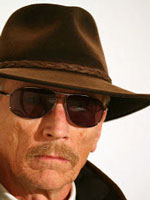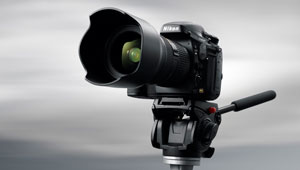
The Nikon D800(E), probably intended as a high MP, best seller DSLR, has instead given us an insight into the intricacies of the technologies and capabilities of a modern camera. The Nikon D800 was surely meant as a merger of two technologies; an everyday, take-everywhere DSLR and a high MP shooter nearing the IQ of a medium format camera. The idea reads like a dream merger of both worlds. The reality, however, reads more like the unpredictable results of the collision between two conflicting sets of requirements.
Listening to photographers from all over the globe tells the story that their experiences with the D800 varies from the best camera ever made to disappointing, out of focus and irreparable.
There are copies of the D800 out there delivering stunning images for everything from fast sports in dark places to expertly lit fashion photography. And then there are D800s out there that have been back to Nikon many times and yet do not focus properly.
How can this be?
Most of the professional medium format cameras on the market offer none of the bells and whistles found in a consumer DSLR. A formerly well-respected producer of medium format cameras offers a single, central AF point. No subject tracking nor servo focus. And of course none of the other glitter features found in consumer DSLRs. Many of these cameras are shot on tripod, under mirror lock-up with CD autofocus or manual focus.

A mass produced consumer DSLR lives at the opposite end of the product design spectrum. The price is paramount and the size and the weight are kept to a minimum. Both Canon and Nikon have managed to figure out how to build these cameras as well and as cheap as possible within the set of expectations that have prevailed so far.
However, the expectations are changing.
In a funny sort of way, the cheap and simple mirrorless point-and-shoot cameras with a fixed lens and image sensor CDAF have quietly contributed to us expecting better and better pictures from our cameras. In spite of small sensors and lower resolution they have quietly invaded the image quality territory of the DSLRs.
So in an effort to defend its territory the DSLRs have started a rapid MP evolution toward higher and higher resolution. This worked well in the Canon 5D which became a best seller. It also worked well in the 5D Mark III. However, I notice that when shooting booth at events, I did better with the 24-70mm F2.8 on the 5D Mark II and the 70-200mm F2.8 on the 5D.
Why?
Because the 21MP sensor is more sensitive to camera shake than the 13MP sensor. Also, Canon put AF fine tuning on the 5D Mark II whereas is wasn’t really needed on the 5D.
Nikon now takes a mid-range consumer DSLR and puts a 36MP sensor in it.
The Nikon D800(E) with a 36MP sensor should be a hell of a camera, shouldn’t it?
Yes, if you get one where all the mechanical parts in the camera are spot on their design targets including the mirror frame, the mirror hinge, the mirror actuator, the mirror stops, the secondary mirror, the PDAF array with all its focus patterns, the image sensor mount and image sensor, etc.
Yes, then you get a hell of a camera. But we are talking about thousands of tolerances to be just right to properly produce the camera as intended on the drawing board.
Both Canon and Nikon have explored the cheapest and fastest way to build these cameras which in no way guarantees that you get a well-working combination of parts when you suddenly go from a 12MP to a 36MP sensor.
Misalignments of parts, mirror vibrations and camera shake are now under a microscope with three times the magnification that you are used to. And since for cost reasons tolerances were on the ragged edge to start with you will now see them much more easily.
So what are the chances that you will be getting the results you expect from a Nikon D800(E).
- If you shoot on tripod with mirror lock-up using center point CDAF and fine-tuned lenses — or manual focus –, you will probably get the best images you ever shot.
- A good monopod is better than nothing.
- If you have to shoot handheld, favor recent release lenses with vibration reduction. The rule of thumb is to use an exposure time which is 1/2 times the focal length of the lens. In other words: with a 50mm lens expose no longer than 1/100th of a second. With a 200mm lens expose no longer than 1/400th of a secondf. Stay with your center AF point if possible and finetune your lenses to that point.
- If you have to shoot sports and fast moving subjects using servo PDAF there might be one Nikon D800(E) out of a hundred that does it exceptionally well and gives you images that no other camera can produce. If so you are one of the lucky ones. If yours does not, however, do not expect Nikon to be able to fix it. Instead pick a camera designed for that purpose.


